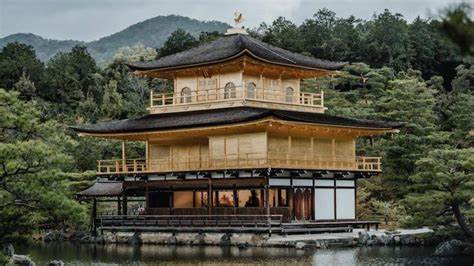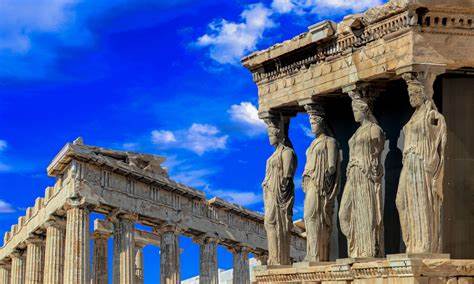Kyoto, often regarded as the cultural capital of Japan, is a city that seamlessly blends ancient traditions with stunning natural beauty. Located in the Kansai region, Kyoto was Japan’s capital for over a thousand years, and its rich history is reflected in its countless temples, shrines, traditional tea houses, and beautiful gardens. Whether you’re admiring the golden allure of Kinkaku-ji or strolling through the enchanting Arashiyama Bamboo Grove, Kyoto offers a serene and spiritual escape into the heart of Japan’s past.
Must-See Highlights:
- Fushimi Inari Shrine: One of Japan’s most iconic landmarks, Fushimi Inari is famous for its thousands of vibrant red torii gates that line the paths leading up Mount Inari. The shrine is dedicated to Inari, the god of rice, and the hike to the top of the mountain provides visitors with a peaceful, spiritual journey through the wooded trails, all while surrounded by the famous torii gates.
- Kinkaku-ji (Golden Pavilion): Kinkaku-ji, or the Golden Pavilion, is one of Kyoto’s most recognized landmarks. The Zen Buddhist temple is covered in shimmering gold leaf, and it beautifully reflects in the surrounding pond, creating a picture-perfect scene. The surrounding gardens, meticulously designed, provide a tranquil atmosphere perfect for quiet reflection.
- Arashiyama Bamboo Grove: The Arashiyama Bamboo Grove is a magical forest of towering bamboo stalks located on the outskirts of Kyoto. Walking through the towering bamboo, you’ll feel as if you’ve stepped into another world. The nearby Tenryu-ji Temple and the Togetsukyo Bridge add to the charm of this beautiful natural setting.
- Kiyomizu-dera Temple: Kiyomizu-dera, a UNESCO World Heritage site, is one of Kyoto’s most popular and historically significant temples. The temple is famous for its vast wooden stage that juts out over a steep cliff, offering stunning views of the surrounding landscape, especially during cherry blossom season. The temple is also home to the Otawa Waterfall, where visitors can drink from the waters for good luck.
- Gion District: Gion is Kyoto’s famous geisha district, where you can experience the traditional tea houses, wooden machiya (townhouses), and narrow streets lined with lanterns. Walking through Gion feels like stepping back in time, and it’s a great place to spot geishas (or maikos, their apprentices) on their way to appointments. The district is especially charming at night when the streets are lit by the soft glow of lanterns.
Things to Do:
- Tea Ceremony Experience: Kyoto is known for its traditional tea culture, and there’s no better place to experience the Japanese tea ceremony. Many tea houses in the city offer visitors the chance to participate in this centuries-old ritual. Enjoy the calm atmosphere as you learn about the art of tea-making, its history, and the delicate flavors of matcha tea.
- Visit the Philosopher’s Path: The Philosopher’s Path is a scenic walk that runs along the canal in northern Kyoto, lined with hundreds of cherry trees. Named after the philosopher Nishida Kitaro, who often walked this route, the path is especially breathtaking during the cherry blossom season in spring. It’s a peaceful place for a contemplative walk, where you can also explore quaint shops and cafes.
- Nijo Castle: Nijo Castle is a grand example of feudal Japanese architecture and history. Built in the early 1600s, the castle is known for its stunning interiors, including the famous “nightingale floors,” which chirp when walked upon as a security measure against intruders. The castle grounds are expansive, featuring beautiful gardens, and it offers a fascinating glimpse into the world of the Tokugawa shogunate.
- Visit the Kyoto Imperial Palace: The Kyoto Imperial Palace was once the residence of the imperial family until the capital moved to Tokyo in the 19th century. The palace is located in the beautiful Kyoto Imperial Park, and while you can wander the grounds on your own, a guided tour offers deeper insight into the history and significance of the palace and its surrounding gardens.
- Kyoto’s Traditional Markets: Kyoto is home to several traditional markets, where you can explore the best of the city’s culinary delights and handicrafts. Nishiki Market, also known as “Kyoto’s Kitchen,” is a must-visit for food lovers. Here, you can sample fresh sushi, pickled vegetables, and Kyoto-style sweets. The market also offers a range of souvenirs, from handcrafted ceramics to delicate fans and kimono accessories.
Travel Tips:
- Best Time to Visit: Kyoto is a year-round destination, but the best times to visit are in spring (March to May) and autumn (September to November), when the weather is mild and the city is blanketed in cherry blossoms or vibrant autumn leaves. Summer (June to August) can be hot and humid, and winter (December to February) is quieter but can be chilly, especially in the mornings and evenings.
- Getting Around: Kyoto’s public transportation system is efficient and easy to navigate, with buses and trains connecting the main attractions. A bus pass can be a convenient way to explore the city. Alternatively, Kyoto is very walkable, and many of the top sights are within walking distance of each other. Bicycles are also a popular way to explore the city’s peaceful streets and neighborhoods.
- What to Wear: Kyoto’s climate can vary depending on the season, so it’s essential to dress appropriately. Light, breathable clothing is best during the warmer months, while layers and warm clothing are recommended in the winter. Comfortable shoes are a must, especially if you plan to explore the many temples and gardens on foot.
- Respecting Traditions: Kyoto is a city steeped in tradition, so it’s important to be mindful of local customs. When visiting temples and shrines, be respectful by bowing slightly before entering, and refrain from talking loudly. If you’re participating in a tea ceremony, follow the host’s instructions carefully, as it is a highly ritualistic practice.
Kyoto is a place where the old and the new coexist in perfect harmony, offering a glimpse into Japan’s cultural soul. Its temples, gardens, and streets are steeped in history, while its tranquil atmosphere invites moments of reflection and serenity. Whether you’re discovering ancient traditions, enjoying a tea ceremony, or simply wandering through the picturesque streets, Kyoto will leave a lasting impression on anyone who visits.






